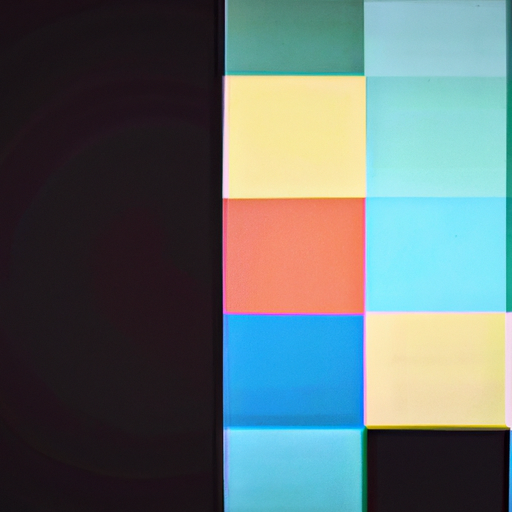
-
Table of Contents
Designing Attention-Grabbing Web Graphics

When it comes to web design, one of the most crucial elements for capturing the attention of visitors is the use of attention-grabbing web graphics. In today’s fast-paced digital world, where users have shorter attention spans than ever before, it is essential to create visually appealing and engaging graphics that can quickly convey your message and leave a lasting impression. This article will explore the key principles and strategies for designing attention-grabbing web graphics, backed by research, examples, case studies, and statistics.
The Power of Visuals in Web Design
Before diving into the specifics of designing attention-grabbing web graphics, it is important to understand why visuals play such a crucial role in web design. Research has consistently shown that humans are highly visual creatures, with studies indicating that the brain processes visual information 60,000 times faster than text. Additionally, 90% of the information transmitted to the brain is visual.
When it comes to web design, visuals have the power to:
- Grab attention and create a memorable first impression
- Convey complex information quickly and effectively
- Evoke emotions and create a connection with the audience
- Enhance the overall user experience
Understanding the Target Audience
Before diving into the design process, it is crucial to understand the target audience and their preferences. Different demographics and industries have varying design preferences and respond differently to certain visual elements. Conducting thorough research and creating user personas can help in identifying the target audience’s preferences and designing graphics that resonate with them.
For example, if the target audience consists of millennials, incorporating vibrant colors, bold typography, and trendy design elements might be more effective. On the other hand, if the target audience is professionals in a corporate setting, a more minimalist and sophisticated design approach might be appropriate.
Color Psychology and Visual Hierarchy
Color plays a significant role in web design and can greatly impact the effectiveness of web graphics. Different colors evoke different emotions and can influence how users perceive and interact with a website. Understanding color psychology and using it strategically can help in creating attention-grabbing web graphics.
For example, red is often associated with urgency and can be used to draw attention to specific elements or calls to action. Blue, on the other hand, is often associated with trust and can be used to create a sense of reliability and professionalism.
In addition to color psychology, visual hierarchy is another important aspect to consider when designing attention-grabbing web graphics. Visual hierarchy refers to the arrangement and prioritization of visual elements to guide the user’s attention. By using size, color, contrast, and positioning, designers can create a clear visual hierarchy that directs the user’s focus to the most important elements.
Typography and Readability
Typography is a crucial element in web design that can greatly impact the readability and overall visual appeal of web graphics. Choosing the right fonts and using them effectively can make a significant difference in capturing and retaining the attention of users.
When selecting fonts for web graphics, it is important to consider factors such as legibility, readability, and compatibility across different devices and browsers. Fonts should be easy to read, even at smaller sizes, and should align with the overall brand identity and message.
Additionally, using typography creatively can help in creating attention-grabbing web graphics. For example, incorporating bold and large typography for headlines can make them stand out and draw the user’s attention. Combining different font styles and sizes can also create visual interest and hierarchy.
Using Visuals to Tell a Story
Humans are naturally drawn to stories, and incorporating storytelling elements into web graphics can greatly enhance their attention-grabbing potential. By using visuals to tell a story, designers can create a more engaging and memorable experience for users.
One effective way to use visuals to tell a story is through the use of infographics. Infographics combine text and visuals to present complex information in a visually appealing and easy-to-understand format. They can be used to convey statistics, processes, or comparisons, making them highly effective in capturing and retaining the attention of users.
Another way to incorporate storytelling into web graphics is through the use of illustrations or photographs that depict a narrative. By using visuals that evoke emotions and create a connection with the audience, designers can make a lasting impression and increase engagement.
Case Studies and Examples
Let’s take a look at a few case studies and examples that demonstrate the effectiveness of attention-grabbing web graphics:
Case Study 1: Slack
Slack, a popular team collaboration tool, uses attention-grabbing web graphics on their website to convey their messaging effectively. Their homepage features a large hero image with bold typography and vibrant colors, instantly capturing the attention of visitors. The graphics showcase the product in action, creating a visual narrative that engages the audience and communicates the benefits of using Slack.
Case Study 2: Dropbox
Dropbox, a cloud storage service, effectively uses attention-grabbing web graphics to communicate their value proposition. Their website features a combination of illustrations and photographs that depict real-life scenarios where Dropbox can be useful. The visuals create a connection with the audience and make the benefits of using Dropbox more tangible and relatable.
Key Takeaways
Designing attention-grabbing web graphics is a crucial aspect of web design that can greatly impact user engagement and overall success. Here are the key takeaways to keep in mind:
- Understand the target audience and design graphics that resonate with them
- Utilize color psychology and visual hierarchy to create effective visuals
- Choose fonts strategically to enhance readability and visual appeal
- Incorporate storytelling elements to create a more engaging experience
- Learn from successful case studies and examples
By implementing these strategies and principles, designers can create attention-grabbing web graphics that leave a lasting impression and drive user engagement.
